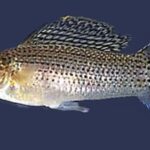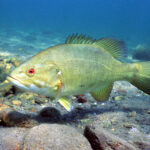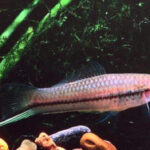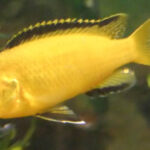Longfin Mako Shark
By Ryan Maron | Last Modified: July 12, 2025
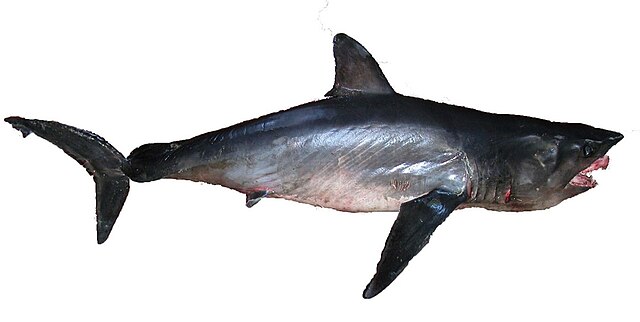
The Longfin Mako Shark represents one of nature’s most enigmatic and misunderstood predators, embodying both the raw power and elusive nature that defines the ocean’s apex hunters. Known scientifically as *Isurus paucus*, this remarkable species stands as the lesser-known sibling of the more famous shortfin mako shark, yet possesses unique characteristics that set it apart in the marine ecosystem. As a top predator in the pelagic zone, the Longfin Mako Shark plays a crucial role in maintaining the delicate balance of oceanic food webs, regulating populations of mid-water fish species and serving as an indicator of overall ocean health. This species faces mounting pressure from commercial fishing operations and habitat degradation, making its conservation status a matter of growing concern among marine biologists and conservation organizations worldwide.
| Feature | Details |
|---|---|
| Common Name | Longfin Mako Shark |
| Scientific Name | Isurus paucus |
| Family | Lamnidae |
| Typical Size | 200-250 cm (79-98 in), 60-120 kg |
| Habitat | Deep oceanic waters |
| Diet | Pelagic fish, squid, crustaceans |
| Distribution | Tropical and temperate oceans worldwide |
| Conservation Status | Vulnerable |
Taxonomy & Classification
The Longfin Mako Shark belongs to the family Lamnidae, commonly known as mackerel sharks, which includes some of the ocean’s most formidable predators. Within this family, *Isurus paucus* forms part of the genus Isurus alongside its more widely recognized relative, the shortfin mako shark (*Isurus oxyrinchus*). The scientific classification places this species within the order Lamniformes, a group characterized by their torpedo-shaped bodies and powerful swimming capabilities.
First described by Guitart Manday in 1966, the Longfin Mako Shark was initially considered a subspecies of the shortfin mako until genetic analysis confirmed its distinct species status. The species name “paucus” derives from Latin, meaning “few” or “little,” likely referring to the relatively low number of specimens observed during early taxonomic studies. This classification reflects the species’ elusive nature and preference for deep oceanic waters, making encounters with researchers comparatively rare.
The phylogenetic relationships within the Lamnidae family reveal that longfin makos share common ancestry with other fast-swimming pelagic sharks, having evolved specialized adaptations for life in the open ocean. Molecular studies indicate that the split between longfin and shortfin makos occurred approximately 7-10 million years ago, allowing sufficient time for the development of distinct morphological and behavioral characteristics. This evolutionary divergence has resulted in two species that occupy similar ecological niches but have adapted to different hunting strategies and prey preferences.
Physical Description
The Longfin Mako Shark exhibits the classic torpedo-shaped body plan that defines efficient pelagic predators, yet possesses distinctive features that clearly differentiate it from its shortfin relative. The most prominent distinguishing characteristic, as the common name suggests, lies in the significantly longer pectoral fins, which extend well beyond the posterior margin of the first dorsal fin. These elongated pectoral fins typically measure 18-20% of the total body length, compared to the 12-15% ratio observed in shortfin makos.
The species displays a striking coloration pattern that serves both camouflage and thermoregulatory functions. The dorsal surface presents a deep metallic blue that gradually transitions to a silvery-white ventral coloration, creating effective countershading that helps conceal the shark from both prey and potential threats. The snout appears more elongated and pointed compared to the shortfin mako, with a slightly broader head that houses powerful jaw muscles capable of generating tremendous bite force.
Adult Longfin Mako Sharks typically reach lengths of 200-250 centimeters, with exceptional individuals growing beyond 300 centimeters. Females generally attain larger sizes than males, a characteristic known as sexual dimorphism that reflects the species’ reproductive strategy. The body weight ranges from 60-120 kilograms for average-sized adults, with the streamlined body shape minimizing drag during high-speed pursuit of prey. The large, prominent eyes indicate the species’ reliance on visual hunting, particularly in the dimly lit mesopelagic zone where many of their preferred prey species reside.
Habitat & Distribution
The Longfin Mako Shark demonstrates a truly cosmopolitan distribution, inhabiting tropical and temperate oceanic waters across all major ocean basins. This species shows a marked preference for deep pelagic environments, typically found at depths ranging from 100 to 500 meters, though vertical migrations can carry individuals to depths exceeding 1,000 meters. Unlike many coastal shark species, longfin makos rarely venture into shallow continental shelf waters, maintaining their existence in the vast expanses of the open ocean.
Temperature preferences play a crucial role in determining the species’ distribution patterns, with longfin makos favoring water temperatures between 16-25°C. This thermal tolerance allows them to occupy a broader latitudinal range compared to some other pelagic sharks, extending from approximately 40°N to 40°S latitude. The species exhibits seasonal migration patterns that follow temperature gradients and prey availability, with some populations moving toward higher latitudes during warmer months.
Regional populations exist throughout the Atlantic, Pacific, and Indian Oceans, with genetic studies suggesting some degree of population structure between ocean basins. The North Atlantic population appears to be distinct from Pacific populations, indicating limited gene flow across major oceanic boundaries. This distribution pattern reflects the species’ adaptation to life in the open ocean, where vast distances and oceanographic barriers can influence population connectivity. The preference for deeper waters often overlaps with the habitat ranges of blue sharks and other pelagic species, creating complex predator-prey relationships in the mesopelagic zone.
Diet & Feeding Behavior
The Longfin Mako Shark has evolved as a specialized predator of the mesopelagic zone, targeting a diverse array of prey species that inhabit the twilight depths of the ocean. Their diet consists primarily of fast-swimming pelagic fish, including tuna, mackerel, billfish, and various species of lanternfish that form the backbone of deep-sea food webs. Cephalopods, particularly squid species, constitute a significant portion of their diet, with stomach content analyses revealing evidence of both small schooling squid and larger solitary species.
The feeding strategy of longfin makos differs notably from that of their shortfin relatives, reflecting their adaptation to deeper water environments. While shortfin makos rely heavily on burst-speed attacks near the surface, longfin makos employ a more energy-efficient hunting approach that involves prolonged cruising in the mesopelagic zone. Their hunting behavior often involves vertical migrations, following the daily migration patterns of deep-water prey species as they move between feeding and resting depths.
Prey selection appears to be influenced by both availability and energy content, with longfin makos showing a preference for lipid-rich fish species that provide maximum nutritional value. The species demonstrates opportunistic feeding behavior, adapting their diet to local prey abundance and seasonal variations. During certain periods, crustaceans and other invertebrates may comprise a larger portion of their diet, particularly in areas where traditional prey species are scarce. This dietary flexibility has likely contributed to their success in colonizing diverse oceanic environments across multiple ocean basins.
Behavior & Adaptations
The Longfin Mako Shark has evolved a suite of behavioral and physiological adaptations that enable it to thrive in the challenging environment of the deep ocean. One of the most remarkable adaptations is their ability to regulate body temperature through a specialized circulatory system known as regional endothermy. This adaptation allows them to maintain core body temperatures several degrees above ambient water temperature, enhancing muscle function and swimming efficiency in the cold depths of the mesopelagic zone.
Swimming behavior in longfin makos reflects their adaptation to deep-water hunting, with movement patterns characterized by steady, energy-efficient cruising interspersed with rapid acceleration during prey capture. Their swimming speed typically ranges from 2-5 km/h during normal cruising, but can exceed 30 km/h during prey pursuit. The elongated pectoral fins serve multiple functions, providing enhanced maneuverability during slow-speed navigation and acting as stabilizers during high-speed swimming.
Social behavior in this species remains poorly understood due to the challenges of observing deep-water sharks in their natural habitat. However, available evidence suggests that longfin makos are generally solitary animals, with individuals only coming together during mating periods. Their vertical migration patterns often involve movements of several hundred meters, following prey species and potentially avoiding larger predators. The species demonstrates remarkable navigational abilities, with some individuals tracked over distances exceeding 1,000 kilometers while maintaining precise directional movement patterns.
Reproduction & Life Cycle
The reproductive biology of the Longfin Mako Shark exemplifies the challenges faced by large pelagic sharks in maintaining viable populations in the vast oceanic environment. This species exhibits ovoviviparity, a reproductive strategy where eggs develop and hatch within the mother’s body, with young sharks born as fully developed miniatures of adults. The gestation period extends approximately 15-18 months, representing one of the longest pregnancy periods among shark species and reflecting the species’ investment in producing highly developed offspring.
Sexual maturity in longfin makos occurs relatively late in life, with females reaching reproductive capability at approximately 18-20 years of age and lengths of 200-220 centimeters. Males mature slightly earlier, typically at 15-17 years and lengths of 180-200 centimeters. This delayed maturation represents a significant vulnerability for the species, as individuals must survive nearly two decades before contributing to population reproduction. The reproductive cycle appears to be biennial or triennial, with females requiring extended recovery periods between pregnancies.
Litter sizes typically range from 2-8 pups, with larger females generally producing more offspring. The young are born at approximately 60-70 centimeters in length, already equipped with functional hunting capabilities and the behavioral instincts necessary for survival in the pelagic environment. Pup survival rates remain largely unknown, but are presumed to be relatively low given the challenges of the deep-ocean environment and potential predation pressure from larger sharks and marine mammals. The species demonstrates no parental care beyond the extended gestation period, with young sharks immediately dispersing into the oceanic environment upon birth.
Predators & Threats
Adult Longfin Mako Sharks face relatively few natural predators due to their size, swimming ability, and position as apex predators in the mesopelagic food web. Large individuals may occasionally fall prey to great white sharks or killer whales, particularly in areas where these species’ ranges overlap. Juvenile longfin makos face greater predation pressure from various large pelagic fish and sharks, including adult makos, billfish, and other members of the Lamnidae family.
The primary threats to Longfin Mako Shark populations stem from human activities, particularly commercial fishing operations. The species is frequently caught as bycatch in longline fisheries targeting tuna and swordfish, with mortality rates often exceeding 50% for captured individuals. Their valuable fins make them targets for the international shark fin trade, while their meat is increasingly sought after in various regional markets. The species’ preference for deep waters offers some protection from coastal fishing pressures, but also makes them vulnerable to industrial-scale pelagic fishing operations.
Climate change represents an emerging threat to longfin mako populations, as shifting ocean temperatures and changing prey distributions may alter their preferred habitat ranges. Ocean acidification and decreasing oxygen levels in deep waters could impact the species’ prey base and overall ecosystem health. Pollution, particularly marine plastics and chemical contaminants, poses additional risks as these substances accumulate in top predators and can affect reproductive success and overall health. The species’ slow growth rate and late maturation make populations particularly vulnerable to overexploitation and slow to recover from population declines.
Conservation Status
The International Union for Conservation of Nature (IUCN) currently classifies the Longfin Mako Shark as Vulnerable on the Red List of Threatened Species, reflecting growing concerns about population declines and the species’ susceptibility to fishing pressure. This classification is based on evidence of declining catch rates in several major fishing regions, coupled with the species’ biological characteristics that make it particularly vulnerable to overexploitation. The late age at maturity, low reproductive rate, and slow population growth rate all contribute to the species’ conservation challenges.
Population assessments remain challenging due to the species’ deep-water habitat and the limited data available on catch rates and population trends. However, available evidence suggests that longfin mako populations have declined by 30-50% over the past three decades in several ocean basins. The North Atlantic population appears to be particularly stressed, with some estimates suggesting more severe declines in this region. The species’ inclusion in CITES Appendix II has provided some international protection, but enforcement remains challenging in the vast oceanic environment.
Conservation efforts for longfin makos focus primarily on reducing fishing mortality through improved bycatch mitigation measures and international fishing regulations. The development of circle hooks and modified fishing gear has shown promise in reducing shark bycatch in longline fisheries. Regional fisheries management organizations are increasingly recognizing the need for specific conservation measures for vulnerable shark species, including catch limits and seasonal closures in critical habitats. However, the effectiveness of these measures depends on international cooperation and enforcement across the species’ wide-ranging oceanic habitat.
Human Interaction
Human encounters with Longfin Mako Sharks are relatively rare due to the species’ preference for deep oceanic waters far from coastal areas where most human marine activities occur. When interactions do occur, they typically involve commercial fishing vessels, research expeditions, or deep-sea diving operations in offshore environments. The species poses minimal direct threat to humans, with no confirmed unprovoked attacks on record, largely due to their habitat preferences and generally non-aggressive nature toward humans.
The primary human impact on longfin makos comes through commercial fishing activities, where the species is frequently caught as bycatch in longline fisheries targeting commercially valuable species such as tuna and swordfish. These interactions are rarely intentional but represent a significant source of mortality for the species. The valuable nature of shark fins has also made longfin makos targets for specialized shark fishing operations, particularly in regions where fin prices are high.
Scientific research on longfin makos faces significant challenges due to their deep-water habitat and the technical difficulties of studying pelagic sharks in their natural environment. Satellite tagging studies have provided valuable insights into migration patterns and habitat use, while genetic research has helped clarify population structure and evolutionary relationships. The species’ rarity in research catches has limited the available biological data, making conservation assessments particularly challenging.
The growing awareness of shark conservation issues has led to increased interest in protecting longfin makos and other vulnerable shark species. Educational programs targeting fishing communities and consumers have helped raise awareness about the species’ conservation status and the need for sustainable fishing practices. The development of shark-safe fishing gear and techniques represents an important area of collaboration between researchers, conservation organizations, and the fishing industry.
Interesting Facts
The Longfin Mako Shark possesses several remarkable characteristics that distinguish it from other shark species and highlight its unique adaptations to deep-ocean life. One of the most intriguing aspects of their biology is their ability to undertake extensive vertical migrations, sometimes covering vertical distances of over 1,000 meters in a single day. These movements are believed to be related to following prey species and optimizing energy expenditure in the stratified ocean environment.
The species exhibits one of the most pronounced sexual size dimorphisms among mako sharks, with females growing significantly larger than males. This size difference is thought to be related to the species’ reproductive strategy, as larger females can produce more offspring and have greater energy reserves for the extended gestation period. The largest recorded longfin mako was a female measuring 417 centimeters in length, representing one of the largest specimens ever documented.
Research has revealed that longfin makos possess highly developed electroreceptors, allowing them to detect the electrical fields generated by living organisms. This sensory capability is particularly important in the deep-ocean environment where visual cues may be limited. The species’ brain-to-body weight ratio is among the highest recorded for sharks, suggesting advanced cognitive abilities that may be related to their complex hunting strategies and navigational requirements.
The longevity of longfin makos remains a subject of ongoing research, but age estimates suggest that individuals may live for 25-30 years or more. This extended lifespan, combined with their late maturation, makes the species particularly vulnerable to fishing pressure and highlights the importance of long-term conservation strategies. Unlike many shark species that show site fidelity to specific areas, longfin makos appear to be true oceanic nomads, with some individuals tracked across entire ocean basins during multi-year studies.
Frequently Asked Questions
How can you distinguish a Longfin Mako Shark from a Shortfin Mako Shark?
The most reliable distinguishing feature is the length of the pectoral fins, which extend well beyond the posterior margin of the first dorsal fin in longfin makos. Longfin makos also have a more elongated snout, larger eyes relative to body size, and typically inhabit deeper waters than their shortfin relatives. The overall body proportions are also different, with longfin makos appearing more slender and elongated.
Are Longfin Mako Sharks dangerous to humans?
Longfin Mako Sharks pose minimal danger to humans due to their preference for deep oceanic waters and their non-aggressive nature. There are no confirmed unprovoked attacks on humans by this species, and encounters are extremely rare due to their habitat preferences. The species is generally considered less aggressive than tiger sharks or other potentially dangerous species.
What is the current population status of Longfin Mako Sharks?
The IUCN currently classifies Longfin Mako Sharks as Vulnerable, with evidence suggesting population declines of 30-50% over the past three decades. The species faces significant pressure from commercial fishing operations, particularly as bycatch in longline fisheries. Their slow reproductive rate and late maturation make recovery from population declines particularly challenging.
How deep do Longfin Mako Sharks typically swim?
Longfin Mako Sharks typically inhabit depths ranging from 100 to 500 meters, though they can dive to depths exceeding 1,000 meters during vertical migrations. Their depth preferences are influenced by prey availability, water temperature, and daily migration patterns. This deep-water preference distinguishes them from many other shark species that frequent shallower coastal waters.
Conclusion
The Longfin Mako Shark stands as a testament to the remarkable adaptations that enable life in the deep ocean, yet its future remains uncertain in the face of increasing human pressures and environmental changes. As a key predator in the mesopelagic ecosystem, this species plays a crucial role in maintaining the balance of oceanic food webs, making its conservation essential for overall ocean health. The combination of late maturation, slow reproductive rate, and vulnerability to fishing pressure creates a perfect storm of conservation challenges that require immediate and sustained international cooperation to address effectively.
Share The Article:
More Fish Species:
-
Betta Fish
The Betta Fish, scientifically known as Betta splendens, is one of the most visually captivating and widely recognized freshwater…
-
Sparkling Gourami
The Sparkling Gourami represents one of the most captivating miniature freshwater species available to aquarium enthusiasts and serves as…
-
Congo Tetra
The Congo Tetra stands as one of Africa’s most remarkable freshwater fish species, captivating aquarists and ichthyologists alike with…
-
Electric Blue Cichlid
The Electric Blue Cichlid stands as one of the most striking and sought-after freshwater fish species in the aquarium…
-
Convict Cichlid
The Convict Cichlid (Amatitlania nigrofasciata) stands as one of the most recognizable and widely distributed freshwater fish species in…
-
Bleeding Heart Tetra
The Bleeding Heart Tetra represents one of the most distinctive and peaceful freshwater fish species in the aquarium trade,…
Discover
-
How to Become a Better Fisherman in 2025: Master These 5 Skills
There’s something magical about that moment when your line goes tight and you feel the unmistakable pull of a…
-
Great Lakes Fishing Tactics That Nobody Talks About (But Should)
Ever notice how some anglers consistently haul in impressive catches from the Great Lakes while others struggle to get…
-
Louisiana Redfish Fishing: Best Spots & Tactics for Beginners
Finding that first bull red is a moment you never forget. The pull, the power – it’s something special….
-
How to Fish for Bluegill: 2025 Complete Guide
Bluegill might not be the biggest fish in the pond, but they sure make up for it in fight…
-
Fly Fishing vs Spinning Reels: Choosing the Right Technique
If there’s one debate that never seems to end in fishing circles, it’s fly fishing versus spinning gear. I’ve…
-
7 Best Fly Fishing Foods That Trout Can’t Resist in 2025
If there’s one thing I’ve learned after three decades of fly fishing, it’s that trout can be maddeningly selective…
Discover
-
Swordtail Fish
The Swordtail Fish (Xiphophorus hellerii) stands as one of the most recognizable and beloved species in the aquarium trade,…
-
Whale Shark
The whale shark (*Rhincodon typus*) stands as the ocean’s largest fish species, representing one of nature’s most remarkable gentle…
-
Florida Keys Tarpon Fishing: Seasonal Guide and Rigging Tips
I still remember my first tarpon hookup in the Florida Keys like it happened yesterday, not 17 years ago….
-
Best Time to Go Fishing: Timing Tips for Bigger Catches
If there’s one question I get asked more than any other, it’s about timing. When should you cast that…
-
Kissing Gourami
The Kissing Gourami (*Helostoma temminckii*) stands as one of the most distinctive and recognizable freshwater fish species in both…
-
Wagtail Platy
The Wagtail Platy stands as one of the most distinctive and beloved freshwater aquarium fish, renowned for its elegant…



